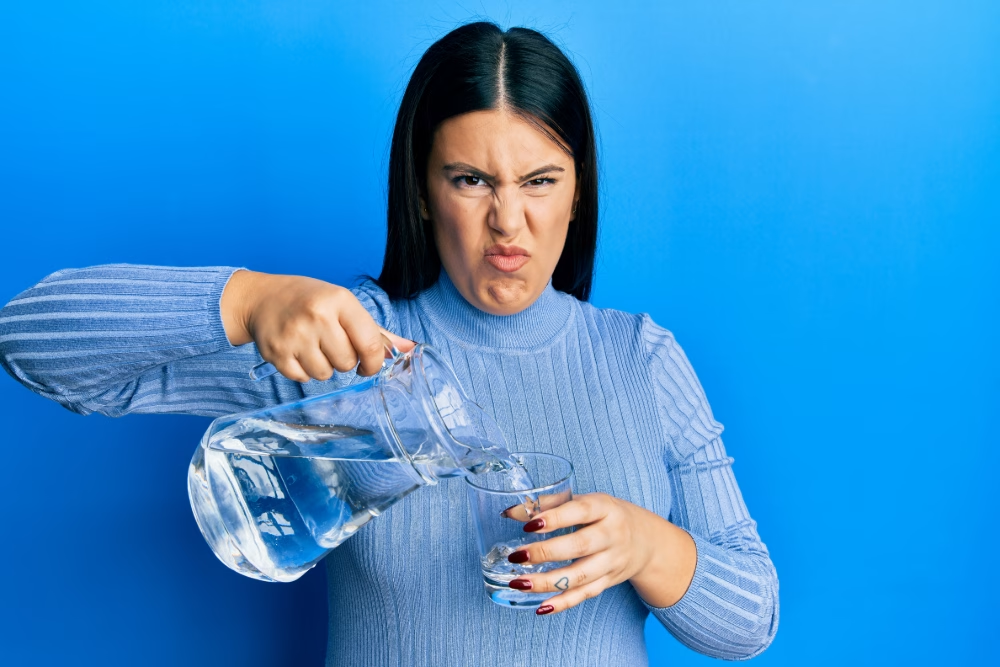Chlorine in drinking water Wisconsin homeowners rely on every day has been used in municipal water supplies for over a century to protect public health by eliminating harmful bacteria and pathogens. While chlorine is effective at preventing waterborne illnesses, recent awareness has increased about its potential impact on health, skin, hair, and household plumbing components, especially here in Wisconsin. Water Doctors is here to explore these concerns and help homeowners understand the best solutions for their water.
Why Do Wisconsin Cities Use Chlorine and Chloramines in Drinking Water?
Cities across Wisconsin, including Milwaukee, Madison, and Waukesha, add chlorine to their water supply because it efficiently eliminates dangerous microorganisms. Many municipalities have transitioned to chloramines, a mixture of chlorine and ammonia, as secondary disinfectants. Chloramines last longer in water distribution systems and create fewer disinfection byproducts (DBPs), but they’re not without their own concerns.
Health Risks from Chlorine and Chloramines
Chlorine and chloramines in drinking water react with organic matter, forming potentially harmful DBPs such as Total Trihalomethanes (TTHMs). According to the Environmental Protection Agency (EPA), TTHMs are regulated due to their health risks, including links to certain cancers and reproductive health concerns.
Research indicates that regular exposure to high levels of chlorine byproducts might increase the risk of certain cancers and long-term health problems. With increased awareness, many Wisconsin residents actively seek ways to reduce their exposure to these chemicals.
How Chlorine and Chloramines Affect Your Skin and Hair

Chlorine and chloramines don’t just pose health risks through drinking water; they also significantly impact your skin and hair. Wisconsin dermatologists frequently recommend reducing chlorine exposure for patients with sensitive skin, eczema, psoriasis, or other dermatological conditions. Chlorinated water strips away natural oils, causing dryness, irritation, itchiness, and worsening existing skin issues.
Additionally, chlorine negatively impacts hair, leaving it dry, brittle, and prone to damage and discoloration. For Wisconsinites dealing with cold, dry winters, chlorine in water can compound these issues significantly, resulting in ongoing discomfort and extra skincare and haircare costs.
Impact of Chlorine and Chloramines on Household Plumbing and Appliances
Chlorine and chloramines are also corrosive to certain materials used in household plumbing and appliances. These chemicals can deteriorate rubber gaskets, seals, hoses, and plumbing fixtures over time. This corrosion can lead to leaks, reduced appliance efficiency, and increased maintenance and repair costs. For example, water softener resin and seals are especially vulnerable to chlorine damage, significantly shortening the lifespan and performance of these important home systems.
Effective Solutions for Removing Chlorine and Chloramines from Wisconsin Drinking Water
Fortunately, there are proven ways to reduce chlorine and chloramine exposure in your Wisconsin home:
Reverse Osmosis Systems
Water Doctors recommends reverse osmosis (RO) systems, such as the Kinetico K5 Drinking Water Station with VOC Guard. These advanced systems remove up to 99% of chlorine, chloramines, and other harmful contaminants, ensuring clean, safe, and great-tasting drinking water.
It’s important to note that some reverse osmosis systems specifically mention chlorine damage in their warranties. Chlorine exposure can void warranty coverage. Ensuring proper pretreatment to remove chlorine is crucial for maintaining your system and warranty integrity. For households concerned about chlorine in drinking water Wisconsin residents often ask about, reverse osmosis offers an effective and reliable solution.
Whole House Dechlorination Systems
A whole-house filtration system provides comprehensive protection, offering chlorine-free water from every faucet and showerhead in your home. Here’s why Wisconsin homeowners increasingly opt for whole-house solutions:
- Stand-Alone Dechlorination: Eliminates chlorine throughout your entire home.
- Protect Your Skin and Hair: Reduces skin dryness and irritation, improving overall dermatological health.
- Extend the Life of Appliances and Plumbing: Chlorine can damage water softeners, plumbing fixtures, rubber gaskets, and seals. Dechlorinating extends appliance longevity and reduces leaks and breakdowns.
- Healthier Indoor Air: Removing chlorine reduces inhalation of harmful vapors during showers, enhancing respiratory health.
Why Choose Kinetico for Chlorine Removal?
Water Doctors proudly offers Kinetico water treatment systems in both single-tank and dual-tank options. Single-tank systems provide stand-alone dechlorination, while dual-tank systems like the Kinetico Q850 combine dechlorination with water softening, making it the most efficient water softener available today. These systems efficiently meet the demanding water quality needs of Wisconsin households, ensuring consistent protection for your health, skin, hair, and home appliances.
Frequently Asked Questions about Chlorine and Chloramines in Wisconsin Water
Q: Is chlorine safe to drink?
A: Chlorine in regulated amounts is generally considered safe, but the long-term effects of DBPs like TTHMs are a growing concern for many homeowners.
Q: How can I tell if my water contains chlorine or chloramines?
A: Chlorine typically has a distinct chemical smell and taste. Chloramine-treated water might also have a noticeable odor, though it’s less strong than chlorine alone.
Q: What’s the best way to remove chlorine and chloramines from drinking water?
A: Reverse osmosis systems and whole-house filtration units are the most effective methods for removing chlorine, chloramines, and their byproducts. These systems are especially helpful for those worried about chlorine in drinking water Wisconsin families regularly deal with.
Take Action for Safer, Healthier Water Today
With increased awareness of chlorine and chloramines impacts, Wisconsin homeowners can take proactive steps. Water Doctors provides expert recommendations, customized solutions, and reliable service to ensure your home’s water quality is always optimal.
For personalized guidance on improving your water quality, contact Water Doctors today. We’re here to help protect your family’s health and enhance your home’s water.
